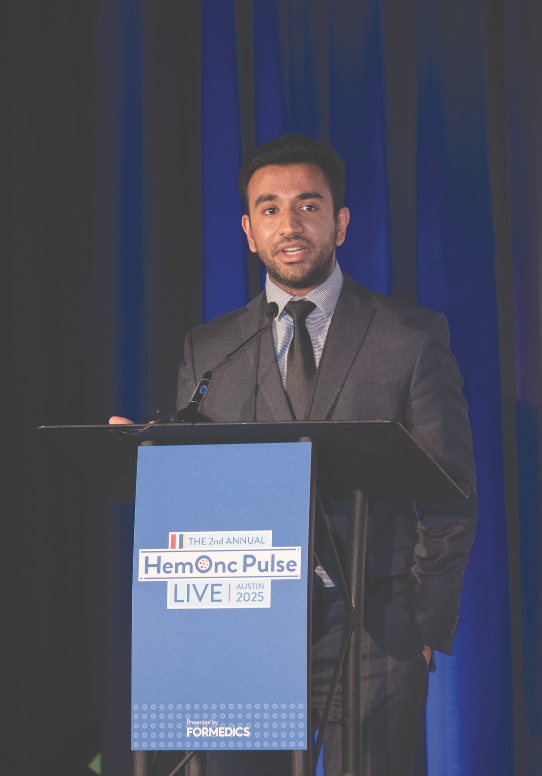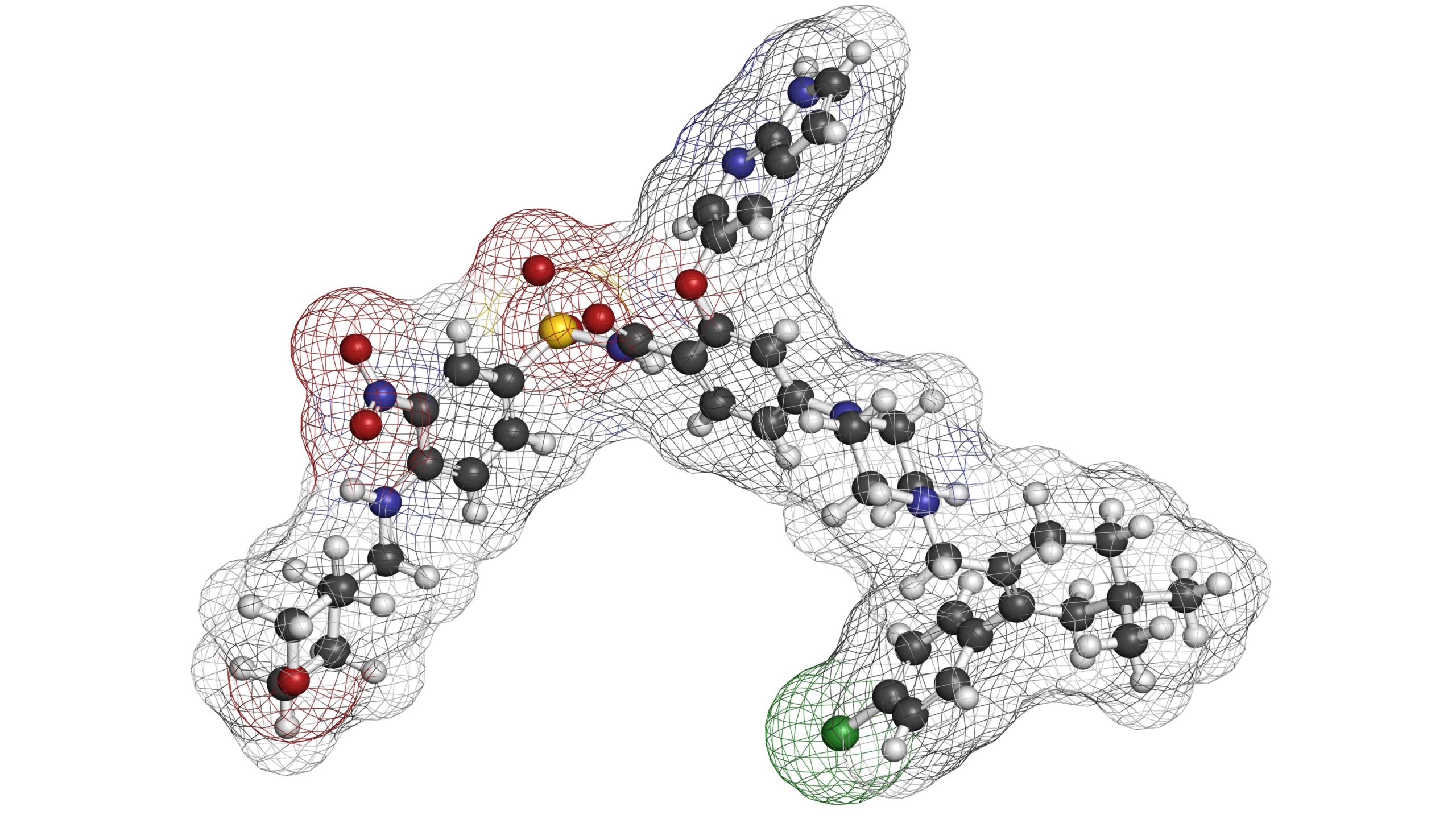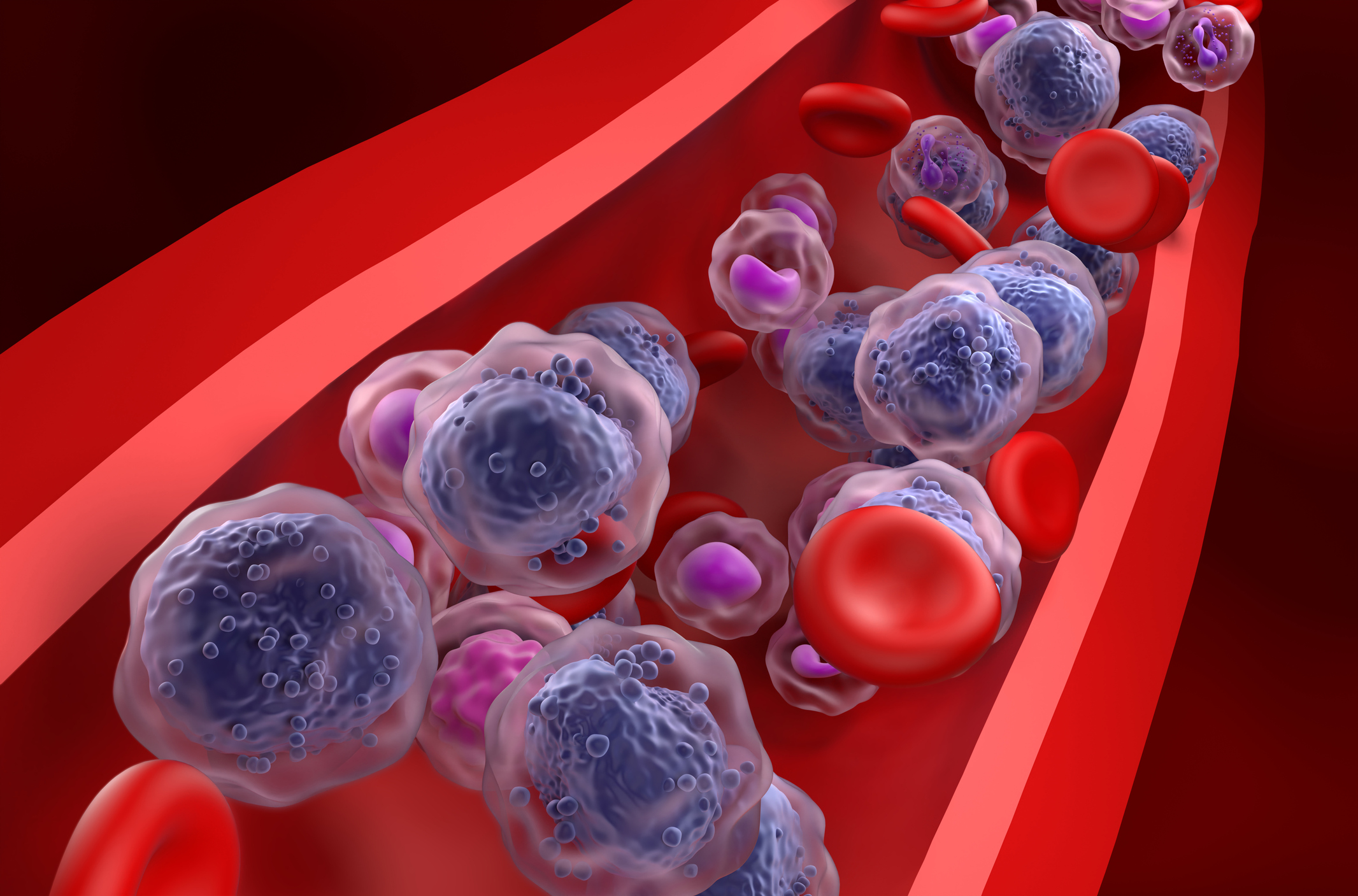
Take-aways:
- c-KIT mutations, present in 20-45% of patients with CBF-AML, had no effect on CR rate in adults.
- In pediatric patients with CBF-AML, c-KIT mutations had no effect on CR rate, while OS, DFS, and PFS rates were significantly worse in children versus adults.
- These findings suggest that c-KIT mutations are a poor risk factor in pediatric patients. Further studies are required to determine whether TKI inhibitors induce responses in this setting.
Core binding factor acute myeloid leukemia (CBF-AML) represents 12% of cases of newly diagnosed AML. While CBF-AML has a post-chemotherapy complete remission (CR) rate of 85 to 98%, prognosis varies widely by age. Among patients with CBF-AML, about 20 to 45% harbor KIT mutations. The c-KIT is a proto-oncogene that encodes the KIT receptor tyrosine kinase. Previous findings about the prognostic impact of c-KIT mutations have been mixed, but some studies suggest that tyrosine kinase inhibitors (TKIs) may decrease the risk of relapse and improve outcomes for patients with these mutations.
In this study, researchers led by Nevine F. Shafik, MD, of the National Cancer Institute Egypt analyzed the incidence of c-KIT exon 8 and 18 D816V mutations in this patient population and compared the characteristics and prognosis of mutant to wild-type.
Among 989 patients diagnosed with AML between June 2017 and September 2020, the prevalence of CBF-AML was 10.3%. In pediatric patients, the prevalence was 13.7%, compared with 8.7% in adults. t(8;21)(q22;q22) was present in 66 patients (64.7%) and 36 patients (35.3%) had inv(16)(p13;q22). In 27 patients (26.5%), c-KIT fragment mutation analysis found a mutant form, with exon 8mutation present in 4 pediatric and2 adult patients. The exon 17 D816Vmutation was found in 9 pediatric and12 adult patients.
A total of 102 patients with CBF-AML were referred to the National Cancer Institute’s outpatient clinic at Cairo University in Egypt. However, 16 of these patients (15.7%) refused therapy because of treatment toxicity or physical condition.
Adult patients received the following as induction therapy:
- 1 to 2 cycles of cytarabine 100 mg/m2 daily as a continuous infusion for 7 days
- anthracycline doxorubicin 45 mg/m2 on days 1 to 3
After induction, adults received consolidation therapy consisting of 3 cycles of high dose cytarabine (HDAC) 3 gm/m2 every 12 hours on days 1 through 3.
Induction therapy for pediatric patients comprised cytarabine, doxorubicin, and etoposide, followed by 3 to 4 cycles in patients who experienced responses.
Older patients and those with comorbidities who were ineligible for intensive chemotherapy were treated with either low-dose cytarabine or hydroxyurea with supportive care.
Due to the unavailability of matched donors, none of the patients in this study underwent allogeneic stem cell transplantation. By day 28 of the study, 5 pediatric patients (13.5%) and 9 adults (18.4%) died.
The study defined CR as less than 5% blasts in the bone marrow and recovery to normal blood parameters without organomegaly or lymphadenopathy after induction. Out of 86 patients who underwent treatment, 31 pediatric patients (83.8%) and 38 adults (77.5%) experienced CR.
For a median of 6.2 months (range, 0.23-51.8) and 10.4 months (range, 0.20-42.0), respectively, investigators followed a total of 86 pediatric and adult patients with complete clinical data. Overall survival (OS) was significantly inferior in pediatric patients with c-KIT–mutated CBF-AML, compared with wild type (P = .045). This significance was not observed in adults. Additionally, OS was significantly inferior in pediatric patients who had CNS infiltration compared with the rest of the group (P = .011).
For pediatric and adult groups, median disease-free survival (DFS) was 14.9 and 14.1 months, respectively. In pediatric patients with c-KIT–mutated CBF-AML, investigators observed a significantly inferior DFS versus wild-type (P = .036). In adults, the only significant difference was found in patients with peripheral blood blasts greater than 50% (P = .042).
Median progression-free survival (PFS) was 6.15 months in the pediatric group and 13.06 months in adult patients. PFS was significantly inferior in pediatric patients with c-KIT mutations compared to wild-type (P = .024) and in those with CNS infiltration (P = .017). In adult patients, PFS was significantly lower in those with blasts greater than 50% in peripheral blood and bone marrow (P = .040).
“These results may suggest c-KIT mutation as a poor risk factor in pediatric CBF-AML patients,” the authors wrote. “Whether the TKIs may have a good response in these patients or not needs further study.”
According to the investigators, one limitation of this research is that “molecular approaches to assessing MRD in AML have been challenging to apply because of the genomic heterogeneity of AML and the instability of some genomic alterations.” As not all patients were assessed for MRD, the authors depended on morphologic and clinical responses for evaluation.
Disclosures: The study authors reported no relevant conflicts of interest.
Reference
Shafik NF, Ibraheem D, Selim MM, et al. The prognostic significance of c-KIT mutations in core binding factor acute myeloid leukemia. Clin Lymphoma Myeloma Leuk. 2021 Dec 2;S2152-2650(21)02469-1.






 © 2025 Mashup Media, LLC, a Formedics Property. All Rights Reserved.
© 2025 Mashup Media, LLC, a Formedics Property. All Rights Reserved.